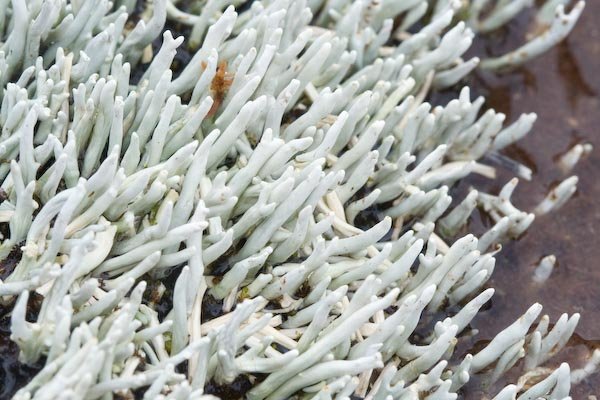
Waterfingers
Siphula ceratites
Though I have certainly seen this lichen before, I had never really stopped to look at it much. It formed rather extensive patches in one particular raised muskeg I visited. I am uncertain how common it is in the general area, though I suspect it is not hard to find. I will try to keep my eyes open to see if such extensive patches of it are typical.
Questions:
Not too far away, in the same muskeg complex, I did not notice this lichen growing. Are there subtle differences between boggy locations (perhaps pH?) that effect the growth of this lichen? (Another possibility is that I just wasn’t paying attention, so I’ll try to go back and check.)


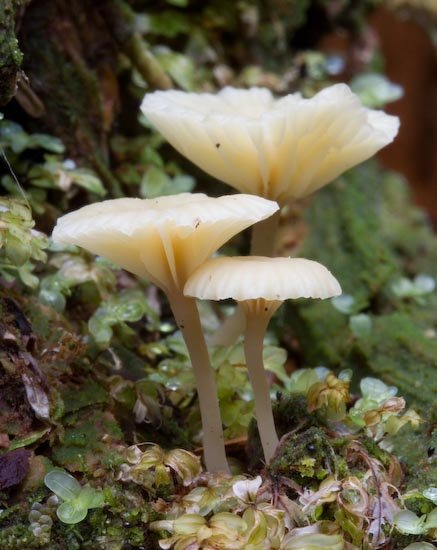
Greenpea Mushroom Lichen
Omphalina umbellifera
It was only recently that I learned this species is actually the fruiting body of a lichen, rather than a regular fungus. After taking these photos, I read about it and learned that the actual non-fruiting part of the lichen is a small inconspicuous dark green granular crust. I’ve never really noticed that before, so I will try to take a closer look when I see these again. I’ve noticed them growing in muskegs and in the forest on rotting wood. I’m not sure what other habitats they might favor.

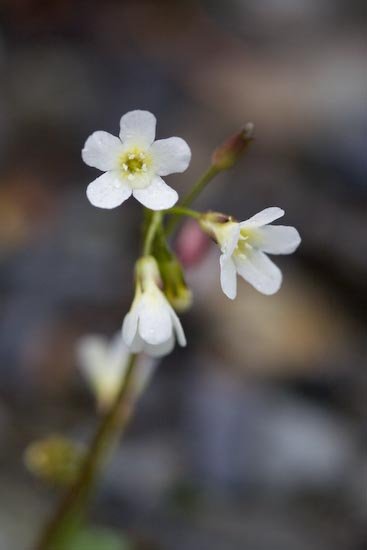
Sitka Mist-maiden
Romanzoffia sitchensis
I ususally notice this species near streams on rocky areas such as gravel bars or cliffs. I would not say it’s abundant, but it is not too hard to find if you look in the right areas.


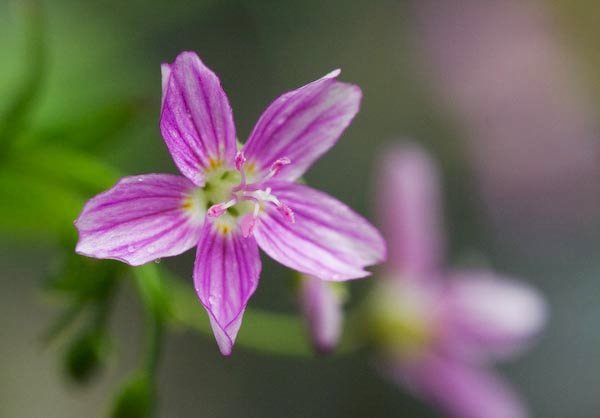
Siberian Miner’s Lettuce
Claytonia sibirica
This is an abundant species that seems to compete well in disturbed areas without a lot of soil. The flowers come in two colors, white and pink. I have no idea what the genetics might be for the color forms.
Questions:
Is flower color determined by genetics? If so, is it relatively easy to determine the color a new plant will produce based on the parent plants?
I have never noticed intermediate color forms, do they exist?


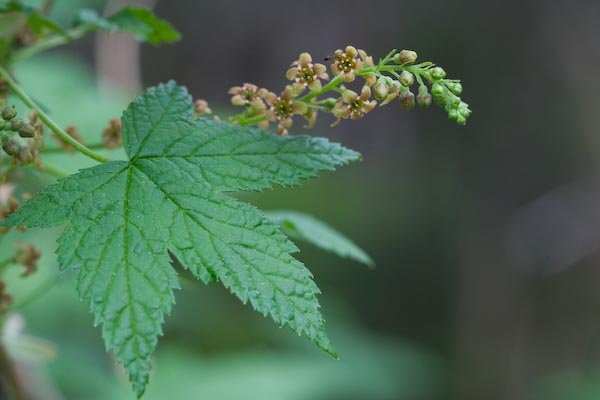
Stink Currant
Ribes bracteosum
This is a common plant in well-drained areas along river bottoms. Sometimes it forms thickets in openings, other times it grows at the edge of rivers. Another common name is Gray Currant, for the gray bloom on the berries. The plant does have a strong and distinctive odor, though I do not consider it unpleasant.


Other Photos













